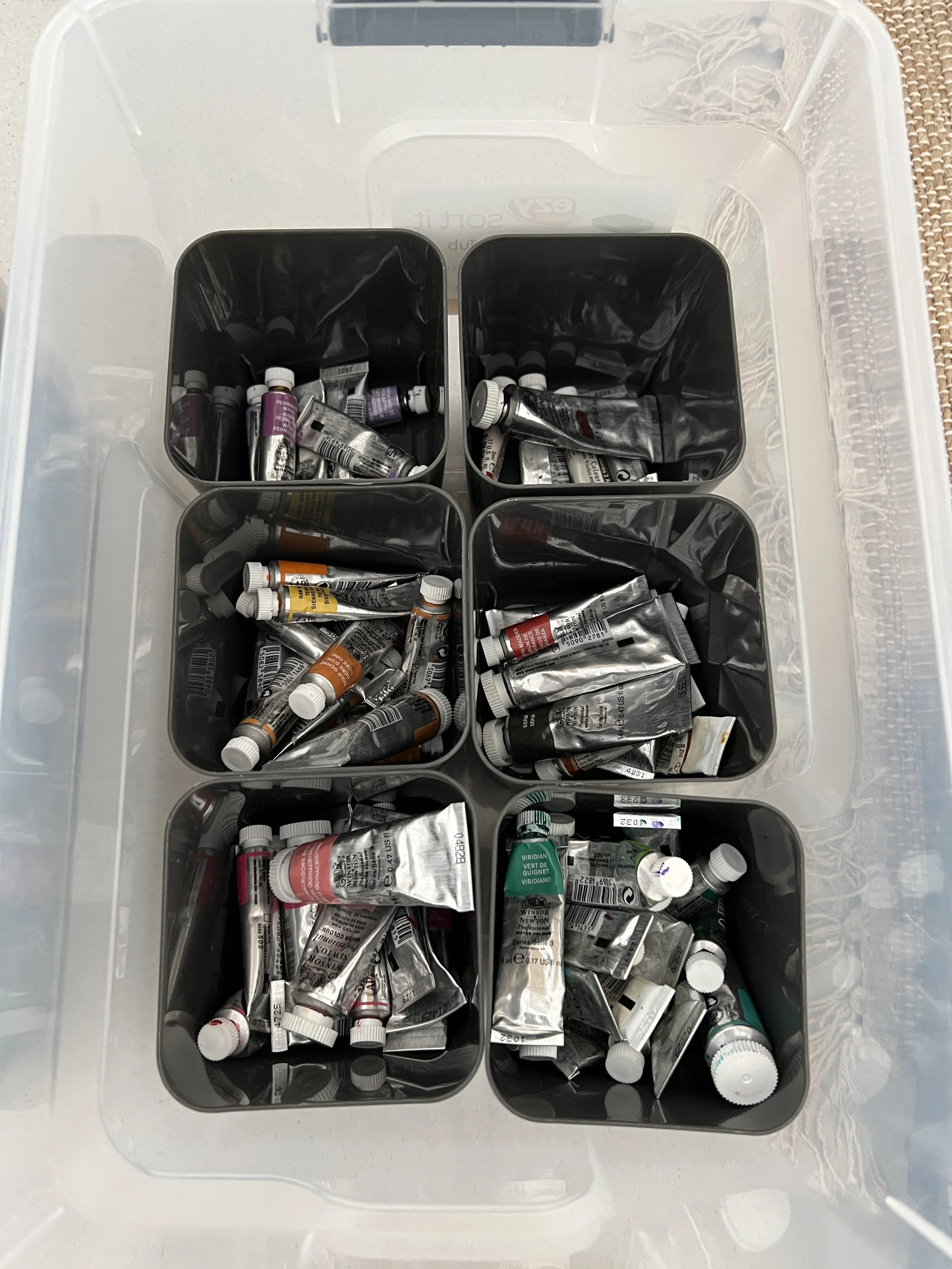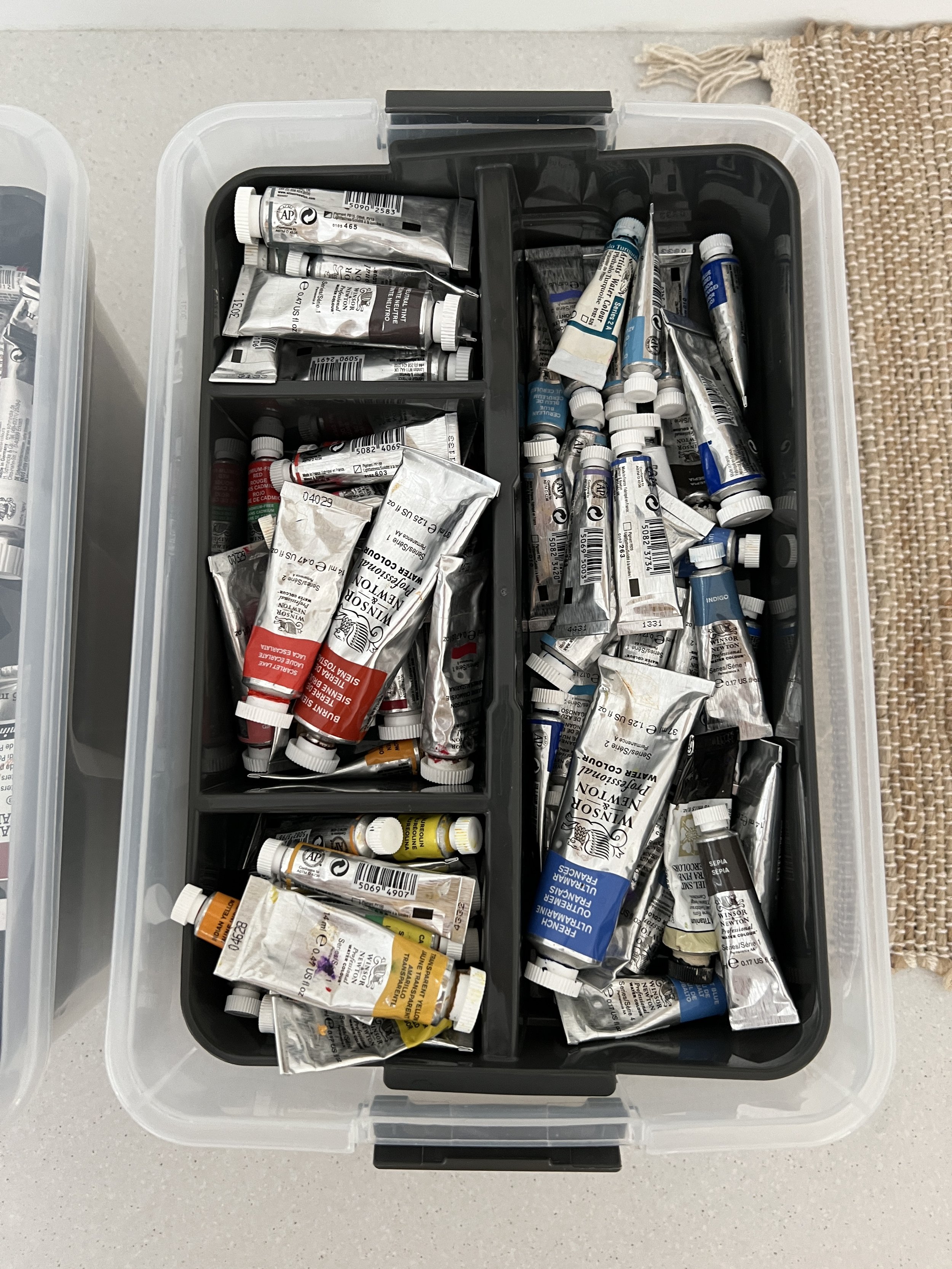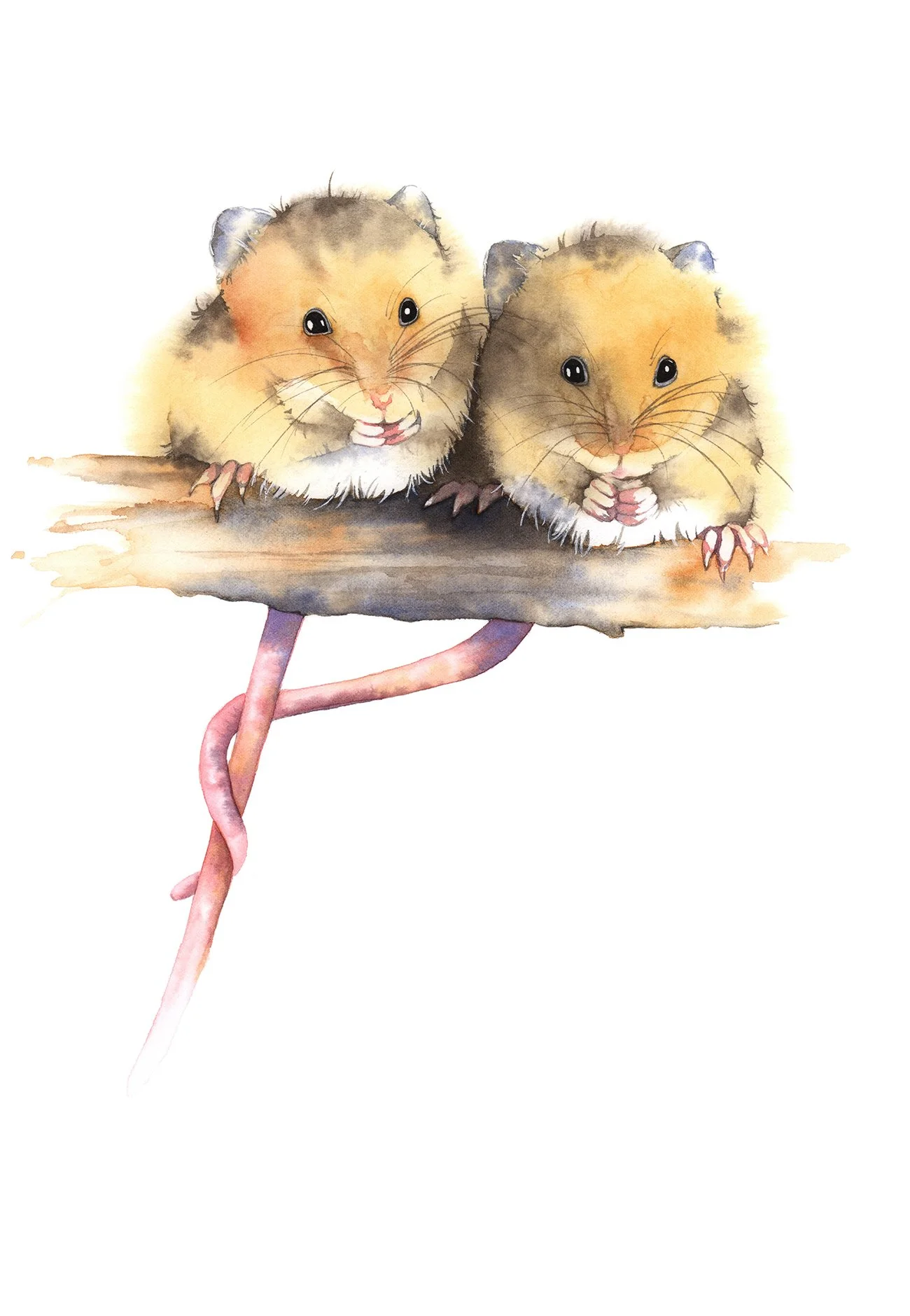Painting Watercolour for Beginners: 5 Frequently Asked Questions
As a watercolour painting teacher, I've had the privilege of guiding thousands of aspiring artists on their creative journeys. Along the way, I've encountered lots of questions about using this medium. In this blog post, I will share with you lots of watercolour tips while I answer five of the most common questions that I have been asked.
What type of pencil do you use under watercolour?
Do you transfer the drawing onto the paper before or after you stretch the paper?
How do you store brushes, paints and paintings?
What do you use to protect your paintings?
Why do my paints not spread and move on the wet paper like yours do?
1. What type of pencil do you use under watercolour?
When it comes to transferring your line drawing onto watercolour paper, the choice of pencil is an important step in your artistic process. I use two methods to achieve this.
Firstly, if I decide to draw the subject directly onto the watercolour paper, I use an HB graphite pencil.
Alternatively, my second method involves using Saral transfer paper. You can buy it in a roll and cut it to the size you need. One piece can be used multiple times.
I create my line drawing on a separate sheet of paper, then secure it in place on the watercolour paper using tape. I slip a sheet of Saral paper underneath the line drawing and proceed to trace over my original drawing.
While this method can get a little messy with potential smudge marks, they're easily removed with an eraser, making it a convenient choice for transferring intricate designs to your watercolour paper.
Because watercolour is a transparent medium I nearly always use an eraser to lighten the pencil lines before I start painting.
2. Do you transfer the line drawing before or after you stretch the paper?
Firstly, I always stretch watercolour paper before I use it. I have a video where I demonstrate my method. I stretch the watercolour paper to keep it flat while I paint on it. A lot of beginners ask me if I transfer my line drawing to the paper before or after I stretch it.
I usually transfer it to the watercolour paper after I stretch it. I wait until it is dry and then I use saral paper, as I mentioned above.
You can also transfer your line drawing to the paper before you stretch it. This is a useful method for artists who use a light box to transfer the drawing.
When you use graphite on watercolour paper and then soak the paper in water I have found that the graphite is a little more difficult to erase once it has been in the water. So make sure the pencil lines aren't too dark before you place it in the water.
3. How do I store my brushes, paints and paintings?
Brush Storage
It's important to store your watercolour brushes well to maintain their shape, preserve the bristles, and extend their lifespan.
I used to store my brushes upright in containers but when we built my studio I included some narrow drawers to be built into the cabinetry.
I now store my brushes in the drawers. I bought some PVC multi purpose cupboard protector rolls and I cut them to fit inside the drawers. The liner stops the brushes from rolling around when I open and shut the drawers.
I store my round brushes in one of the drawers. I separate them into their sizes and types so that I can grab them quickly when I need them.
In a second drawer I store all my flat brushes.
I wash my brushes after use, reshape the bristles and I make sure they are dry before I place them in the drawers.
Watercolor Paint Storage
I store my paints in plastic containers that I bought from a hardware store.
They have seperate compartments so that I can separate the hues. This helps me to find the colours I need quickly.
Paper and Completed Painting Storage
I store my completed paintings in two separate places.
The first place is an old architect's plan cupboard that my husband lovingly restored. It was old and battered and had seen better days but after some tender loving care it now sits proudly in my studio. I store watercolour paper in it as well as completed paintings.
I also have some large plastic containers that I store paintings in. You can see them underneath the cabinet. I don't sell the paintings I do for tutorials in case I need to refer to them in the future.
4. What do you use to protect your paintings?
This is a question that I am asked almost on a weekly basis and the answer to that is, nothing.
Any paintings I do on paper that will be professionally framed with an archival mat, behind glass do not need any protection because the glass will protect them.
If you are concerned about fading, when you frame your painting ask your framer to use UV glass which can cut up to out 99% of ultraviolet light, which will help to protect your painting from fading through light damage.
If I do a painting on a piece of paper that I have glued to a cradled board, it won't be going behind glass so it needs to be protected. Those paintings I spray with Krylon Gallery Series UV Archival Varnish. I give the finished paintings a few coats to protect them.
5. Why do my paints not spread and move on the wet paper like yours do?
I enjoy using the wet on wet technique when I paint. I love to see the paint creep over the wet paper and I love the way colours blend so effortlessly. The paint flows by itself and creates some beautiful effects on wet paper.
Sometimes, beginners may have difficulty getting the paint to spread or move over the wet paper the way it does for me when I paint.
If you find your paint doesn't creep over wet paper it is most likely due to your water to paint ratio.
Add a little more water to your paint mixture and make sure your brush is wet when you load it with paint.
Load the brush fully, don't dab at the paint puddle gently. Get all the bristles in the paint mixture and roll it around so that it has lots of paint on it. When I use round brushes I like to roll them in the paint and reform their point.
Also make sure your paper has a glossy sheen on the surface. As the paper starts to dry, the wet paint isn't going to creep or bleed as much as it does on glossy wet paper.
Adjust the water to paint ratio and experiment. Get yourself a watercolour journal and practice. Sometimes your paint brush might be too wet when you load it with paint and then the paint will spread too far, out of control. Become more aware of the wetness of your paper, your brush and your paint mixture. If the paint isn't doing what you want it to do, change something and try again.
You should experiment with different papers as well. If you are using wood pulp paper, try using 100% cotton watercolour paper instead.
In the world of watercolour painting, every question is an opportunity to refine our craft. I hope this blog post has shed light on some of the common questions that have crossed your artistic path. Watercolour is a captivating medium, and there's always more to learn, practice, and discover. So keep those brushes wet, your paper ready, and your curiosity alive. Embrace the beauty of experimentation, and never stop exploring the exciting world of watercolour painting.
If you are interested in learning to paint in watercolour, I have over 170 online, voiced over watercolour tutorials for all skill levels.
Prints and original artworks are available to purchase in the shop.
Further reading: Ampersand Aquabord Panels for Watercolour.

























